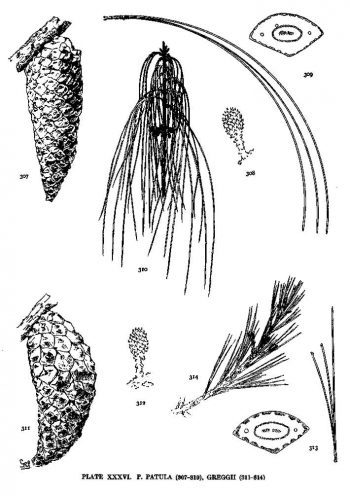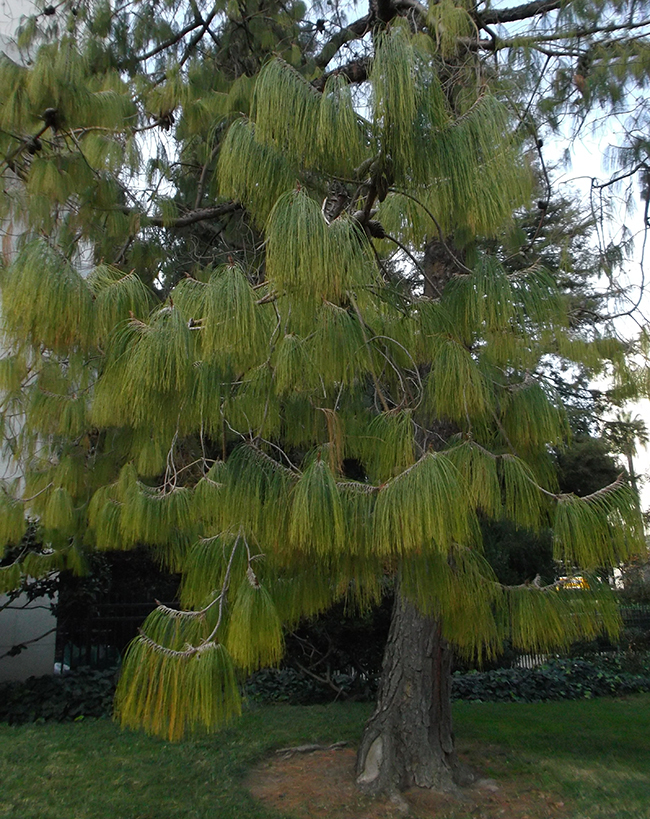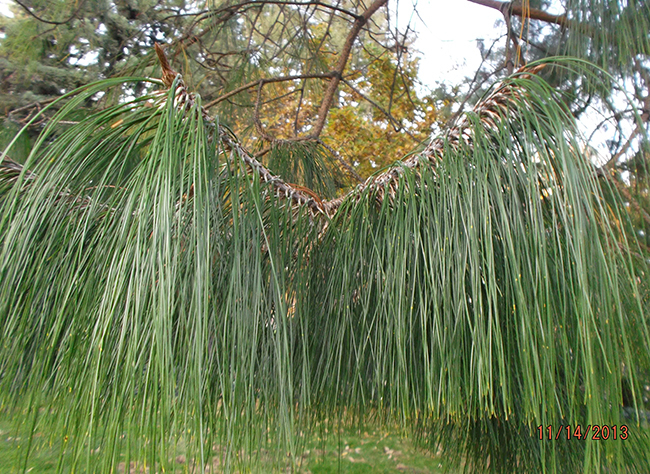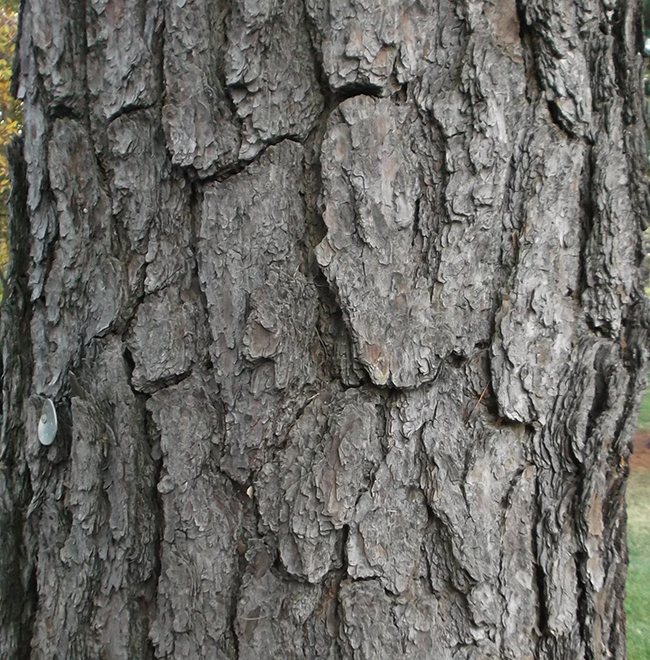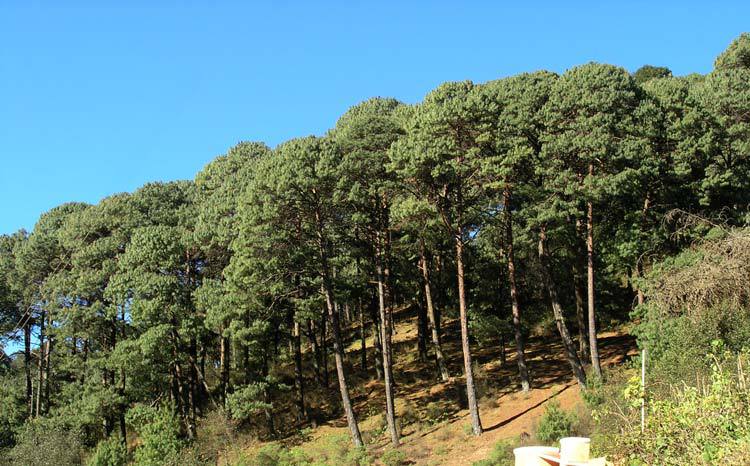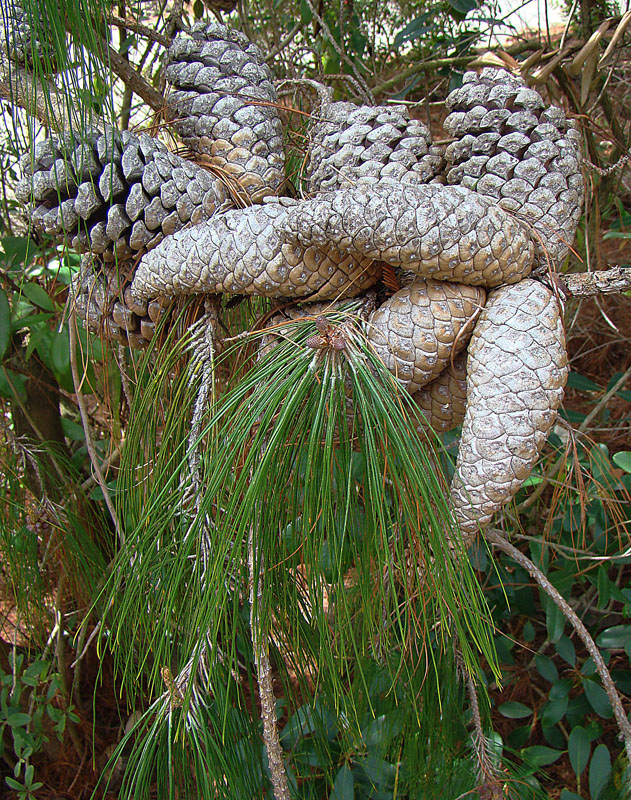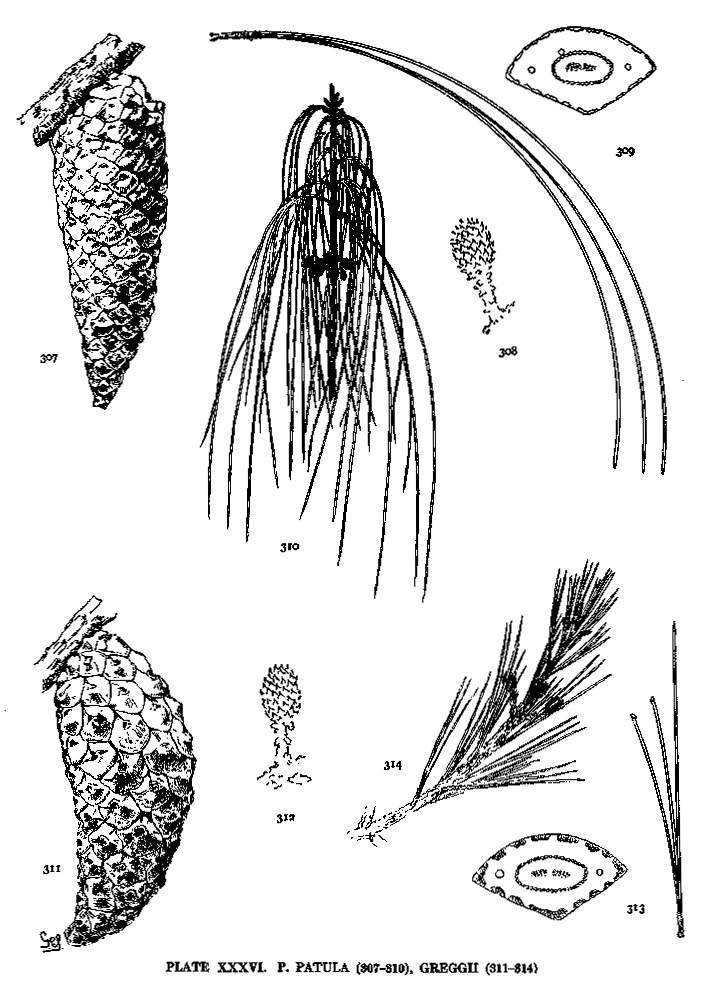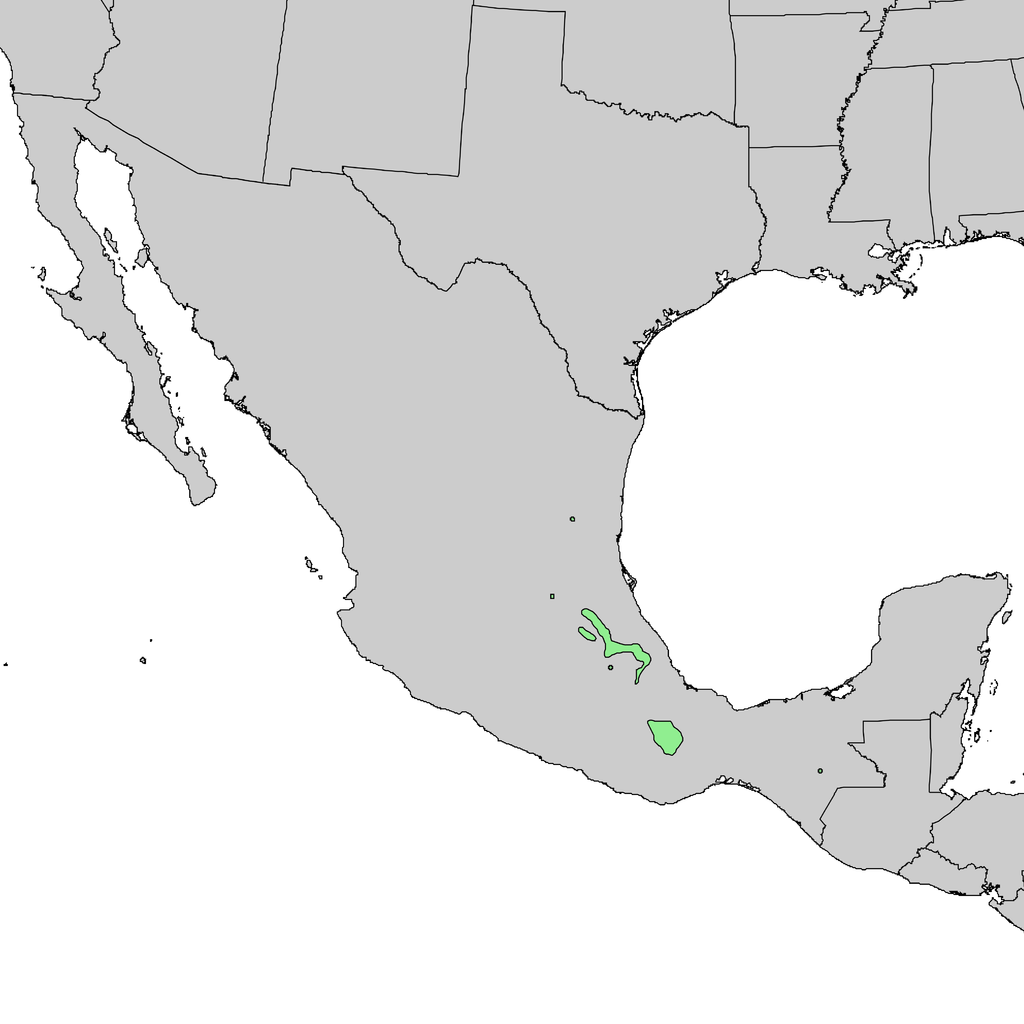subgenus Pinus, section Trifoliae (Duhamel), subsection Australes (Loudon).
Pinus patula, first described in 1831 by Christian Julius Wilhelm Schiede (1798-1836) ex Diederich Franz Leonhard von Schlechtendal (1794-1866) et Adelbert von Chamisso (1781-1838), is commonly known as Jelecote, Mexican weeping pine, spreading-leaved pine, patula pine; as well pino patula, pino chino, or pino triste in the Spanish language. In the Latin language, "patula" translates into "spreading out," possibly referring to the way the seed cones stand out from the twigs as compared to other closed-cone pine species known at the time this one was first described.
Ethnobotany. This is one of the most important pines for timber in Mexico, as it grows quickly and produces a long, straight, fairly clear bole. It is also widely introduced in other tropical countries in plantation forestry, where in some cases it has become problematic as an invasive species.
Description. Mexican weeping pine is an evergreen coniferous species of tree that grows to mature heights of 125 feet (40 m) with a single, straight, slender trunk up to 40 inches (100 cm) in diameter, measured at breast height. In closed canopy stands, depth of the conical or domed crown depth circa 33%.
- Bark on young trees is thin, scaly, and red-brown in color; with age becoming thick, dark gray-brown, rough and scaly with large elongated plates and deep longitudinal fissures.
- First-order branches are long, slender, spreading or slightly ascending; higher order branches slender, drooping, the ultimate branches pendent.
- Shoots are rough and scaly when the leaf fascicles have fallen, colored yellow- to red-brown, foliage shoots have prominent, decurrent pulvini.
- Foliar buds are oblong to cylindrically shaped, the terminal bud measure 0.6 to 0.8 inch (15 - 20 mm) long, laterals are shorter, brown in color, and not resinous. Bud scales are spreading, subulate, and ciliate at the margins.
- Fascicle sheaths initially measure 0.8 to 1.2 inches (20 - 30 mm) long with 6 to 8 imbricate, chartaceous, white-yellow to orange-brown scales, persisting but shortening to 0.48 to 0.6 inch (12 - 15 mm) long in mature fascicles, slowly weathering to gray-brown.
- Leaves (needles) are borne in fascicles of 3 to 4 (sometimes 5), held in drooping tufts, typically in two rows on either side of the upturned shoot, persisting 2 to 3 years on the tree. Individual needles are thin, lax, drooping to pendent, measuring 6 to 10 inches (15 - 25 cm) long by 0.028 to 0.036 inch (0.7-0.9 mm) thick, growing serrulate at the margins, and acute at the tip, colored pale- to dark green. Bands of stomata appear on all needle faces, in 4 to 6 (sometimes 7) lines on the convex abaxial face and 2 to 3 (sometimes 4) lines on each adaxial face. The leaves are triangular in cross section.
- Pollen cones grow crowded and spreading near the proximal end of new shoots, subtended by scarious bracts. They are ovoid-oblong to cylindrical shaped, measuring 0.6 to 0.8 inch (15 - 20 cm) long by 0.2 to 0.32 inch (5 - 6 mm) wide, colored pink-yellow, turning yellow-brown at maturity.
- Seed cones are borne subterminal or lateral on the shoots, in whorls of 2 to many, rarely solitary, persistent or deciduous, on short to moderately long (to 0.8 inch/20 mm long) peduncles. Immature cones are ovoid shaped, on short or long recurved peduncles with persistent cataphylls, purple at first, later turning light brown, maturing in two seasons. Mature cones are narrowly ovoid when closed, usually slightly curved, and more-or-less asymmetrical at the base. Each measure 2 to 4 inches (5 - 10 cm) long by 1.2 to 2.6 inches (4 - 6.5 cm) wide when open.
- Seed scales number 100 to 150 per cone and are serotinous or shedding seed and falling some time after maturing, and are tenacious or deciduous with the peduncle. Each is thin and woody, oblong shaped, usually curved when spreading; the proximal scales are connate, colored purple-brown to dark brown, with adaxial light brown marks left by seed wings. Apophyses are nearly flat to slightly raised, transversely keeled, more or less gibbous on the proximal scales, more so on one side of the cone, rhombic in outline, with an acute or obtuse-rounded upper margin; abaxial surfaces are striate or smooth, (lustrous) ochraceous or yellow-brown in color. Umbo is oriented dorsally, appearing flat or raised, often sunken into the apophysis. Each measures 0.12 to 0.28 inches (3 - 7 mm) wide, colored gray, with a minute, deciduous prickle.
- Seeds are obliquely ovoid shaped and flattened, measuring 0.24 to 0.3 inch (4 - 6 mm) long by 0.08 to 0.16 inch (2 - 4 mm) wide, colored dark gray. Seed wings are articulate, held to the seed by two oblique claws which partly cover the seed on one side. They are obliquely ovate-oblong shaped, measuring 0.48 to 0.72 inch (12 - 18 mm) by 0.2 to 0.32 inch (5 - 8 mm) wide, colored light brown with dark stripes.
Distribution. This species is native to Mexico - Tamaulipas, Querétaro, Hidalgo, México, Distrito Federal, Morelos, Tlaxcala, Puebla, Veracruz, Oaxaca and Chiapas, growing in the high mountains of east-central Mexico, at elevations of 5,000 to 9,200 feet (1,500 - 2800 m) above sea level. It is generally restricted to humid, subtropical to warm-temperate sites, with annual precipitation 40 to 66 inches (1,000 - 2,200 mm). On the eastern slopes of the Sierra Madre Occidental precipitation is augmented by frequent fog outside the rainy season.. This is also a widely-used ornamental and agroforestry species in many moist tropical areas, such as South Africa.
Hardy to USDA Zone 8 - cold hardiness limit between 10° and 20°F (-12.1° and -6.7°C).
